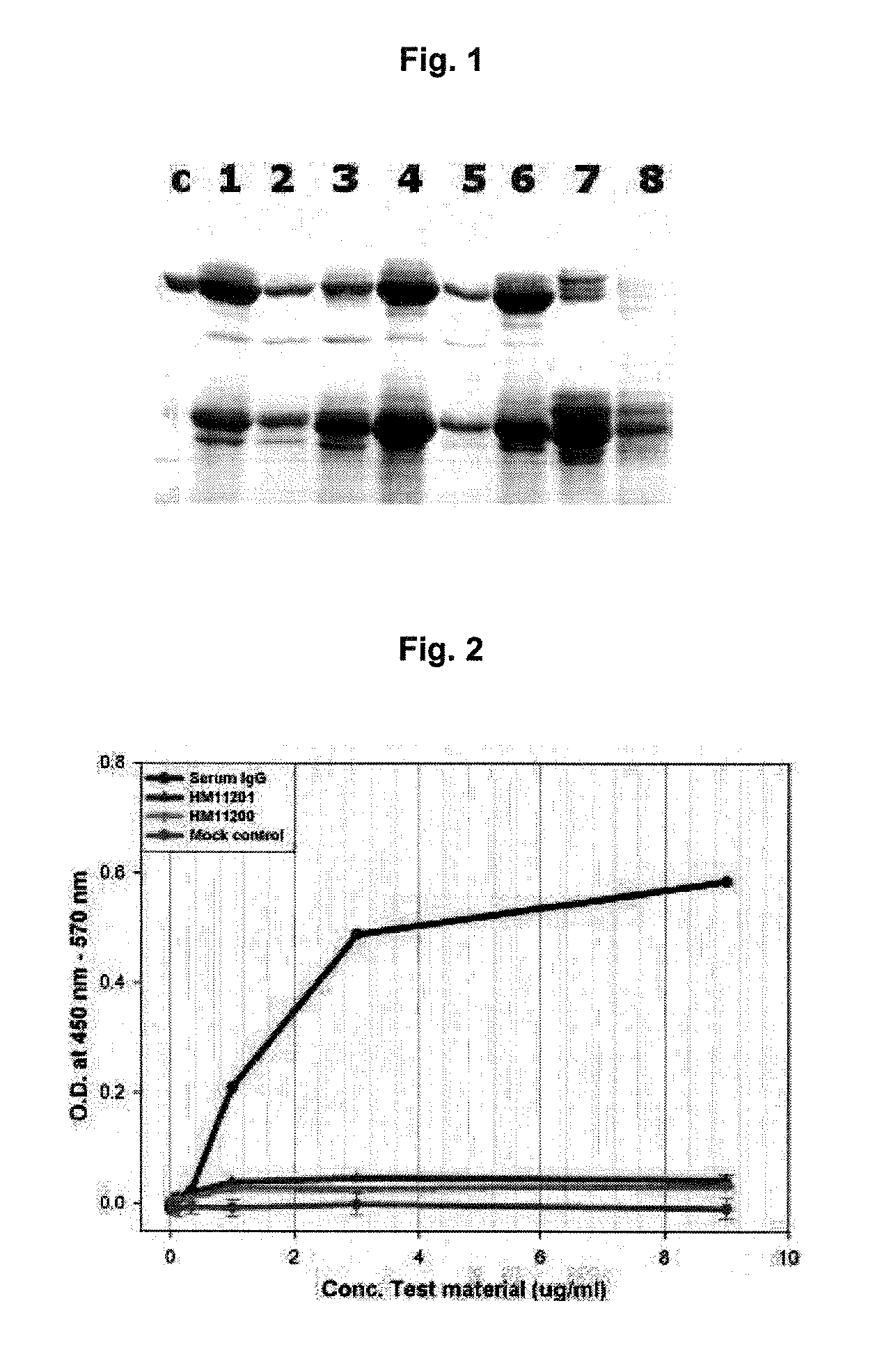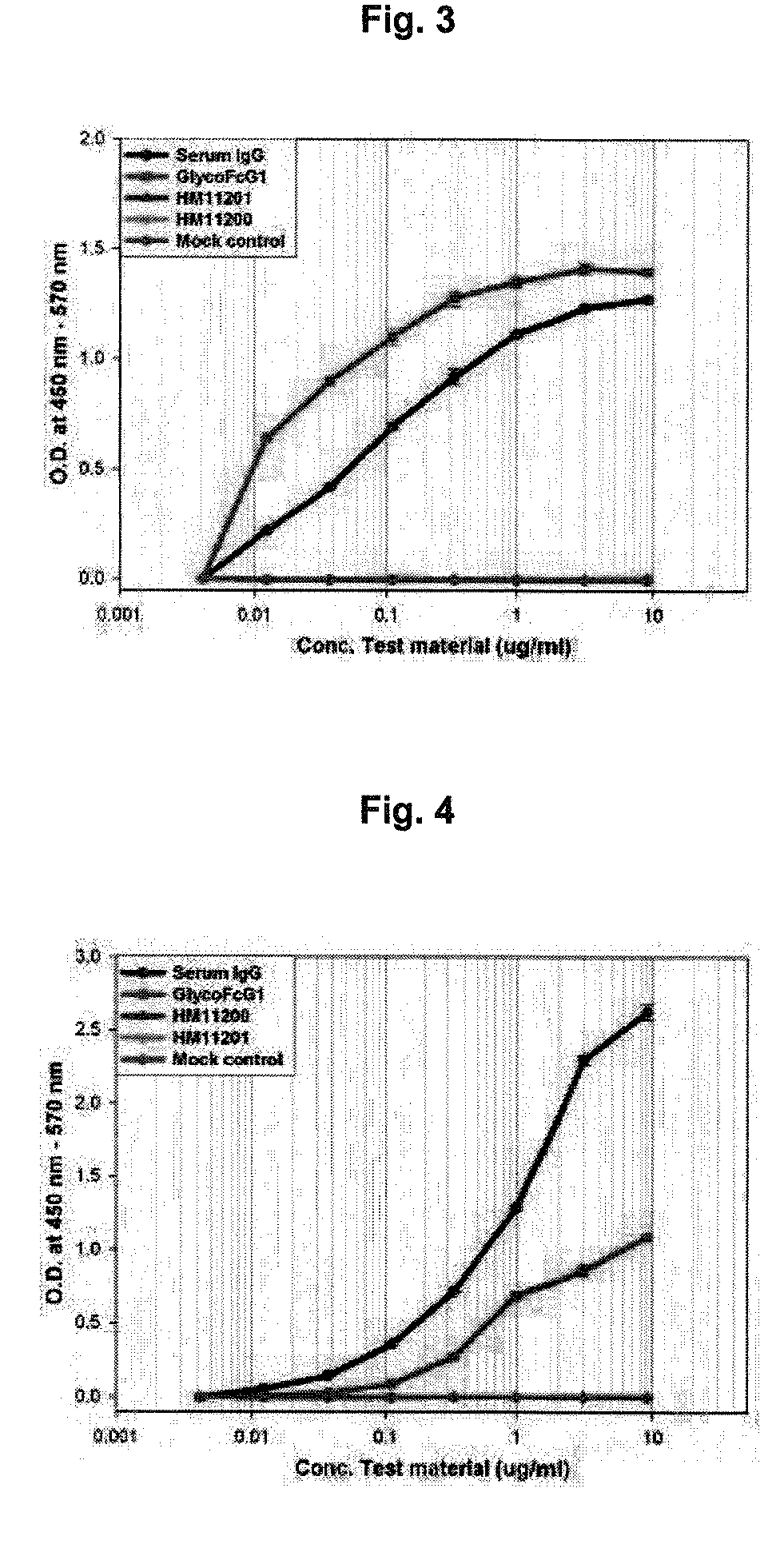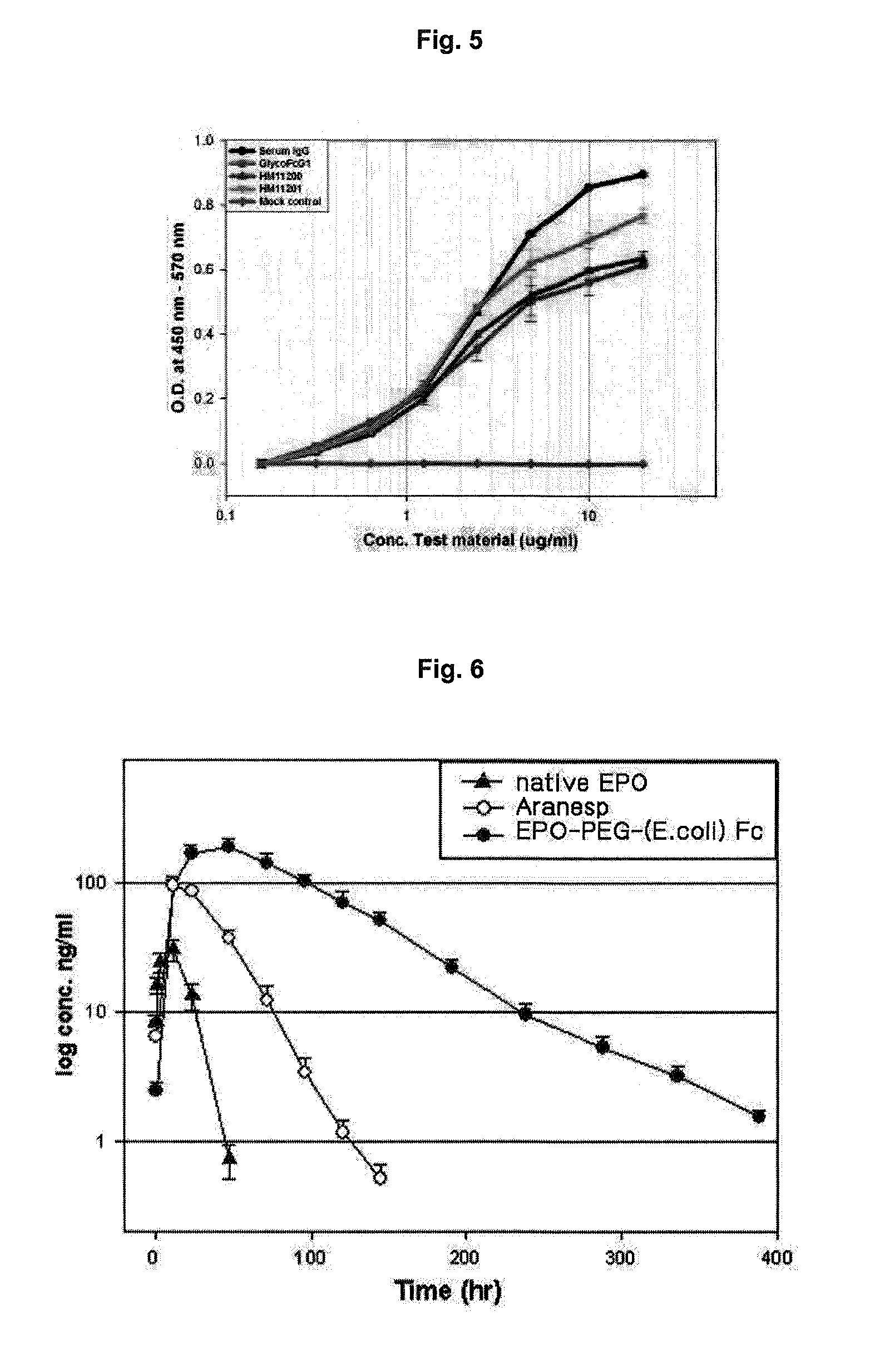Method for the mass production of immunoglobulin Fc region deleted initial methionine residues
a technology of immunoglobulin and fc region, which is applied in the field of mass production of immunoglobulin fc region, can solve the problems of protein drugs that are difficult to keep at in vivo concentrations and titers, serum half-life, and specific cell lysis
- Summary
- Abstract
- Description
- Claims
- Application Information
AI Technical Summary
Benefits of technology
Problems solved by technology
Method used
Image
Examples
example 1
Construction of Human Immunoglobulin IgG4 Fc Region Expression Vector, Expression and Purification of IgG4 Fc Region, and N-Terminal Sequence Analysis
Construction of IgG4 Fc Region Expression Vector
[0060]To clone a heavy chain Fc region including the hinge region of human immunoglobulin IgG4, RT-PCR was carried out with RNA from human blood cells serving as a template, as follows. First, total RNA was isolated from about 6 ml of blood using a Qiamp RNA blood kit (Qiagen), and gene amplification was performed using the total RNA as a template with the aid of a One-Step RT-PCR kit (Qiagen). To amplify genes having different N-terminal sequences, pairs of primers represented by SEQ ID NOS. 1 and 2, 3 and 2, 4 and 2, and 5 and 2 were used. To facilitate a subsequent gene cloning procedure, an Nde I recognition site and the initiation codon ATG, necessary for protein expression, were introduced into 5′ primers of SEQ ID NOS. 1, 3, 4 and 5, and a BamHI recognition site containing a stop ...
example 2
Construction of Human Immunoglobulin IgG1 Fc Region Expression Vector, Expression and Purification of IgG1 Fc Region, and N-Terminal Sequence Analysis
Construction of IgG1 Fc Region Expression Vector
[0074]To clone a heavy chain Fc region including the hinge region of human immunoglobulin IgG1, RT-PCR was carried out in the same manner as in Example . To amplify genes having different N-terminal sequences, the following primers were used.
[0075]
TABLE 3Sequence of 5′ Primers UsedSEQSEQIDIDNO:5′ Primer SequenceNO:MEPK645′GGA ATT CCA TAT GGA GCC CAA ATC72TTG TGA CAA AAC TCA C 3′MSCD655′GGA ATT CCA TAT GTC TTG TGA CAA73AAC TCA CAC ATG CCC 3′MDKT665′GGA ATT CCA TAT GGA CAA AAC TCA74CAC ATG CCC ACC GTG C 3′MCPA675′GGG ATT TCC ATA TGT GCC CAG CAC75CTG AAC TCC TGG GGMPKS685′GGG AAT TCC ATA TGC CCA AAT CTT76GTG ACA AAA CTC ACMCPP695′GGG AAT TCC ATA TGT GCC CAC CGT77GCC CAG CAC CTG AAC TCCMPPC705′GGA ATT CCA TAT GCC ACC GTG CCC78AGC ACC TGA ACT CCT G 3′MPCP715′GGA ATT CCA TAT GCC GTG CCC AGC79A...
example 3
Construction of Human Immunoglobulin IgG2 Fc Region Expression Vector
Construction of IgG2 Fc Region Expression Vector
[0089]To clone a heavy chain Fc region including the hinge region of IgG2, RT-PCR was carried out in the same manner as that used for IgG4 Fc region. To amplify genes having different N-terminal sequences, the following primers were used.
[0090]
TABLE 5SEQ ID5′ Primer SequencesNO:G2MPPCSS5′ GGG AAT TCC ATA TGC CAC CGT GCC81CAG CAC CAC CTG TGG CAG G 3′G2MPCPSS5′ GGG AAT TCC ATA TGC CGT GCC CAG82CAC CAC CTG TGG CAG GAC 3′G2MCPSS5′ GGG AAT TCC ATA TGT GCC CAG CAC83CAC CTG TGG CAG GAC 3′G2MCCVSS5′ GGG AAT TCC ATA TGT GTT GTG TCG84AGT GCC CAC CGT GCC CAG C 3′G2MCVESS5′ GGG AAT TCC ATA TGT GTG TCG AGT85GCC CAC CGT GCC CAG CAC C 3′
[0091]The 3′ primer had the sequence of 5′-CGC GGA TCC TCA TTT ACC CGG AGA CAG GGA GAG GCT CTT C-3′ (SEQ ID NO: 80) and was applied for the amplification of all of the genes having different N-terminal sequences. To facilitate a subsequent gene clon...
PUM
| Property | Measurement | Unit |
|---|---|---|
| temperature | aaaaa | aaaaa |
| temperature | aaaaa | aaaaa |
| pH | aaaaa | aaaaa |
Abstract
Description
Claims
Application Information
 Login to View More
Login to View More - R&D
- Intellectual Property
- Life Sciences
- Materials
- Tech Scout
- Unparalleled Data Quality
- Higher Quality Content
- 60% Fewer Hallucinations
Browse by: Latest US Patents, China's latest patents, Technical Efficacy Thesaurus, Application Domain, Technology Topic, Popular Technical Reports.
© 2025 PatSnap. All rights reserved.Legal|Privacy policy|Modern Slavery Act Transparency Statement|Sitemap|About US| Contact US: help@patsnap.com



